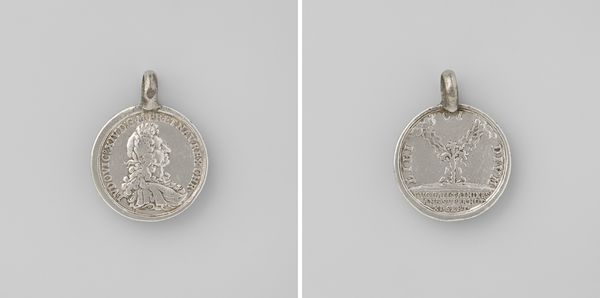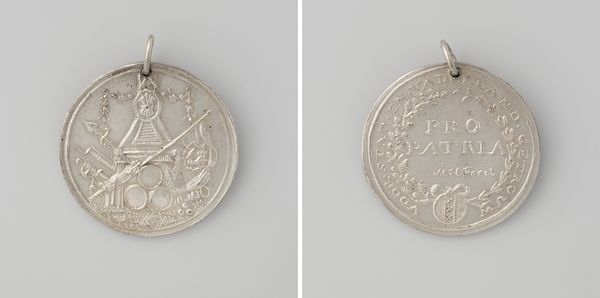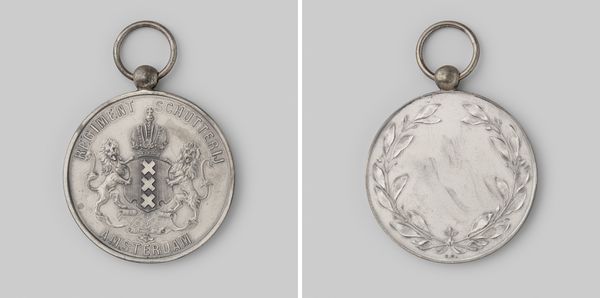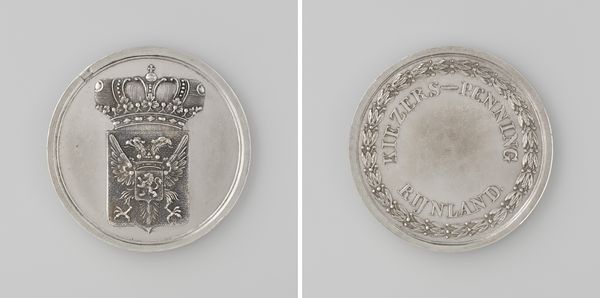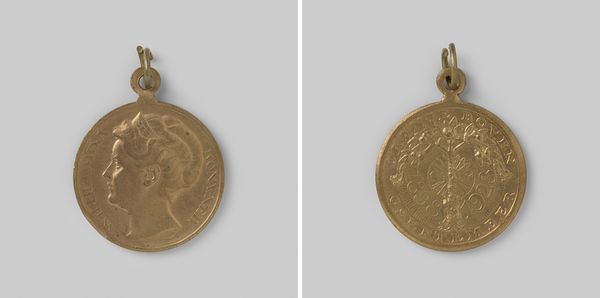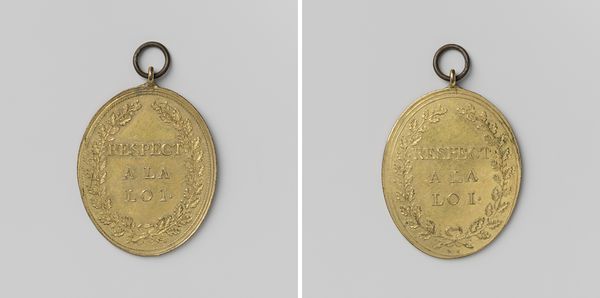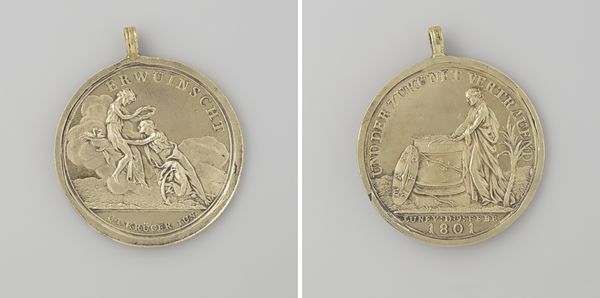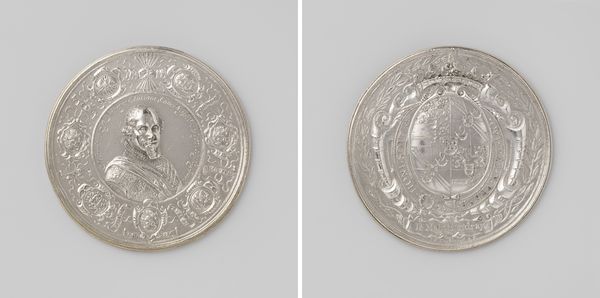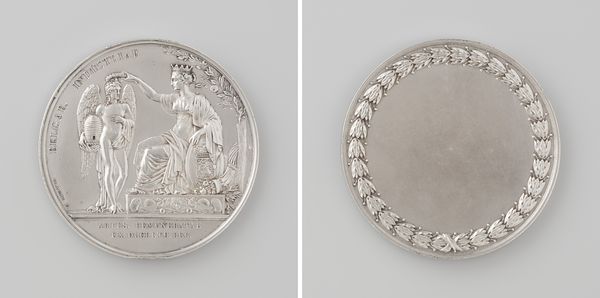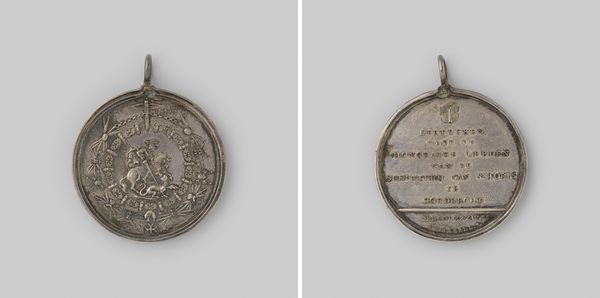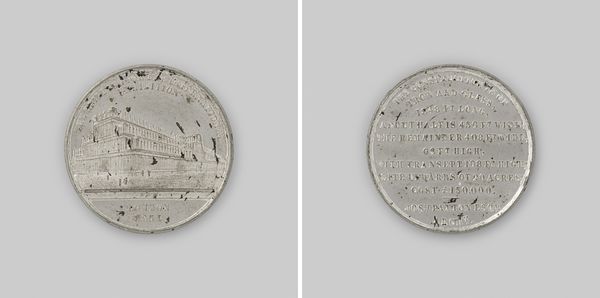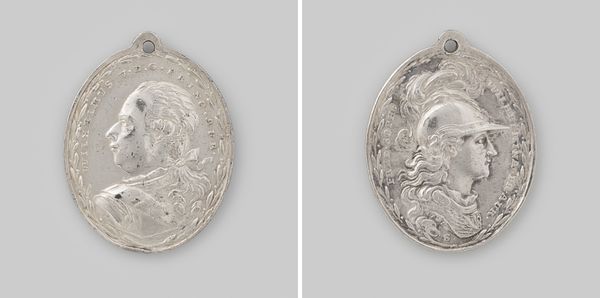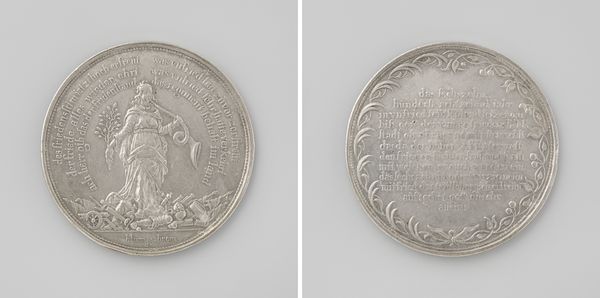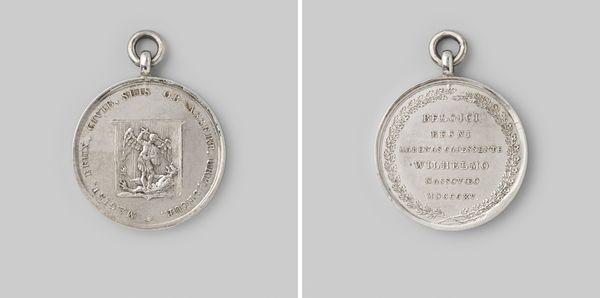
silver, metal, engraving
#
portrait
#
medal
#
silver
#
neoclassicism
#
metal
#
history-painting
#
engraving
Dimensions: diameter 6.5 cm, weight 38.14 gr
Copyright: Rijks Museum: Open Domain
Editor: This is a silver medal from 1823, awarded to Louis Royer for winning the Prix de Rome. What strikes me is the inscription – it's so formal. How do you interpret this work in its historical moment? Curator: Medals like these, especially within the Prix de Rome context, are fascinating documents of institutional power and artistic patronage. They're not simply honoring individual talent but reinforcing a particular vision of artistic excellence dictated by the French Academy. This vision was incredibly hierarchical and exclusionary. Editor: Exclusionary in what way? Curator: Consider who had access to such training and recognition at the time. Was it open to women? To people of color? Who had the financial resources to pursue this path? This medal then becomes more than a symbol of individual achievement, it reflects a system that perpetuates certain privileges. Do you notice any symbols which might reinforce such social hierarchies? Editor: The laurel wreath? Isn't that a classic symbol of honour and triumph? Curator: Precisely. And that symbolism itself is deeply rooted in classical ideals, shaping artistic norms for centuries in the Western world. Doesn't that adherence to tradition also imply something about the politics of that historical period? Editor: You're right, it makes you wonder about whose stories are being told, whose achievements are celebrated, and whose are actively being excluded or marginalized. Curator: Exactly. And critically analyzing these structures can illuminate our own contemporary biases in the art world. Even medals can participate in maintaining unequal distribution of power, not only honor, whether we see it immediately or not. Editor: It is pretty striking to think about how even seemingly innocuous objects can reflect power structures. I'll definitely look at art differently from now on. Curator: That's the goal of art history. Question everything.
Comments
No comments
Be the first to comment and join the conversation on the ultimate creative platform.
